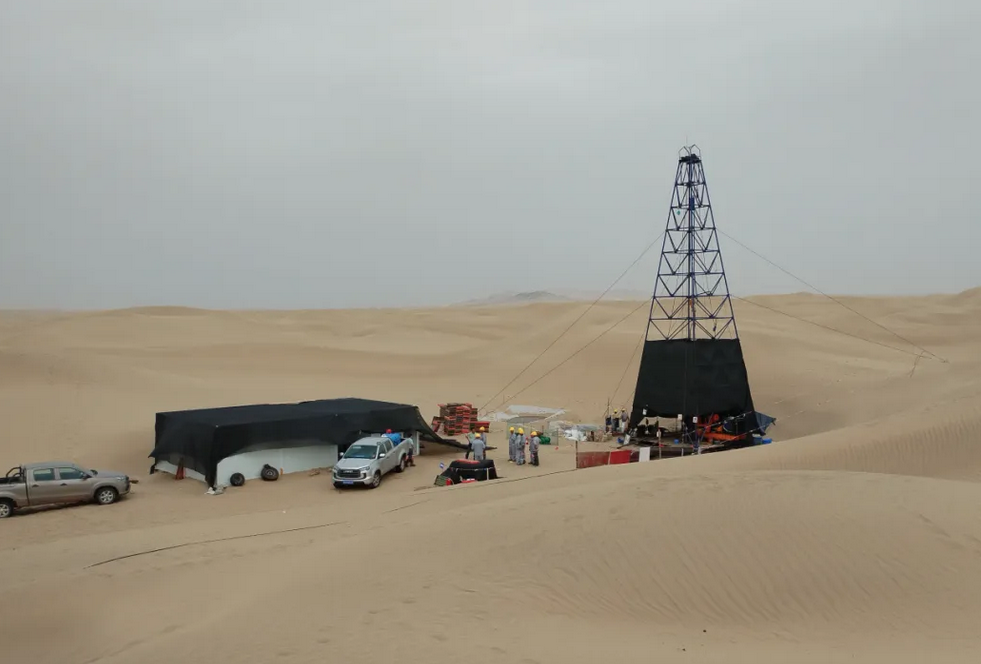Breaking New Ground: China's Historic Uranium Discovery Rewrites Geological Rulebook
Desert Depths Yield Unprecedented Treasure in Xinjiang's Tarim Basin
In the heart of one of Earth's most forbidding landscapes, Chinese scientists have achieved what many experts long deemed impossible. Last week, the China National Nuclear Corporation announced a discovery that has sent ripples through global energy markets and geological communities alike: the world's deepest sandstone-type uranium mineralization, buried 1,820 meters beneath the shifting sands of the Taklamakan Desert.

The July 18 announcement marks not merely a national achievement but a paradigm shift in global understanding of uranium formation. In the unforgiving terrain of Xinjiang's Tarim Basin—where summer temperatures routinely surpass 50°C and winter plunges to -20°C—a team of researchers has upended decades of conventional wisdom about where and how uranium deposits form.
"This discovery transforms what we thought we knew about uranium mineralization in oxidized environments," noted a senior geologist familiar with the project. "The scientific community previously dismissed these red-colored layers as 'uranium dead zones'—we've now proven that assumption fundamentally incorrect."
Needle in a Desert Haystack: The Four-Year Quest
The breakthrough did not come easily. For four years, a team of just over 30 scientists—half of them young PhDs born in the 1980s and 1990s—battled both natural elements and professional skepticism. The Taklamakan, China's largest desert, has long been considered a "uranium exploration forbidden zone" by international experts due to its inhospitable conditions and seemingly unfavorable geology.
The critical moment arrived in early winter 2024, when drilling operations reached the 1,820-meter mark. Despite mounting pressure to abandon the costly operation, the team persisted. Their tenacity was rewarded with the discovery of an 8-meter thick uranium-bearing layer—a moment captured in the dramatic spike of detection equipment readings that team members now describe as their "Eureka moment."
Shattering the Geological Ceiling
What makes this discovery revolutionary isn't merely its depth—though that alone breaks previous world records—but the theoretical frameworks it overturns.
Traditional uranium exploration relied heavily on two principles: the presence of "dark sedimentary formations" rich in organic matter and the preference for basin-edge locations where geological conditions were thought most favorable. The CNNC team discarded both assumptions, developing instead what they term an "Exudation-Infiltration Dual Genesis Model."
This innovative approach posits that uranium-bearing gases can rise from deep geological formations and interact with oxygenated water in shallower layers, precipitating uranium even in previously dismissed "red zones" of oxidized sediment. This theoretical leap opened exploration into what the team calls the "second prospecting space" at depths between 500-2000 meters.
Desert Innovation: Engineering Meets Extreme Environment
To overcome the Taklamakan's notorious detection challenges—where 60% of the basin lies under sand dunes—the team developed a comprehensive "Sky-Air-Ground-Depth" detection system that integrates:
- Satellite imaging for macro geological mapping
- Advanced aerial sensors for physical and chemical surface detection
- Ground-level geophysical and geochemical surveys
- Precision deep drilling technologies
This integrated approach, enhanced by AI-based predictive modeling, allowed the team to identify ten prospective mining areas with unprecedented accuracy despite the challenging desert terrain.
"What we've built is not just a uranium detection system, but a comprehensive methodology for exploring resources in environments previously considered inaccessible," explained a project advisor who requested anonymity due to the strategic nature of the work.
From Scientific Triumph to Economic Reality: The Road Ahead
While the discovery represents a scientific milestone, industry analysts caution that significant technical and economic hurdles remain before this deep uranium can contribute to China's energy needs.
"Depth equals cost in mining economics," observed a resource economist tracking the development. "At 1,800+ meters, traditional extraction methods become prohibitively expensive, while in-situ leaching techniques face enormous engineering challenges including extreme pressure, temperature, and precision control issues."
These barriers explain why, despite the discovery's strategic importance, some market watchers remain measured in their immediate economic assessments. "What we're seeing is a scientific breakthrough that may take years to translate into production breakthroughs," noted an energy market analyst.
Strategic Implications in a Nuclear-Focused Future
The timing of this discovery aligns with China's aggressive expansion of nuclear power—the country currently operates or is building more nuclear reactors than any other nation. Securing domestic uranium supply chains has clear strategic value beyond mere economics.
"This discovery sends a powerful message that China has options when it comes to fuel security," commented an international energy security specialist. "Even if these resources remain technically challenging to extract today, their proven existence changes the long-term strategic calculus."
Beyond uranium, the exploration model and technologies developed could potentially revolutionize how China—and eventually other countries—approach the discovery of other critical minerals in similarly challenging environments.
Investment Landscape: Navigating the New Resource Frontier
For investors watching this development, several sectors may experience ripple effects in the coming years. Companies specializing in advanced drilling technologies, nuclear fuel processing, and extreme-environment resource extraction could see increased interest as China works to commercialize its deep uranium resources.
Mining technology firms focusing on in-situ leaching advancement may find particular opportunities as this extraction method represents the most promising approach for accessing such deep deposits economically. Similarly, specialized equipment manufacturers developing solutions for high-pressure, high-temperature environments could benefit from increased R&D investment in this space.
Market analysts suggest monitoring not just uranium prices—which may see limited immediate impact—but also broader technological innovation in the resource sector. The most significant investment opportunities may emerge in companies developing transferable technologies that could apply to multiple critical minerals in challenging environments.
However, investors should note that technological development timelines remain uncertain, and commercialization of these deep resources faces substantial hurdles. Past performance in related sectors doesn't guarantee future results, and consultation with financial advisors regarding specific investment decisions is recommended.
As one veteran resource investor framed it: "We're witnessing the first chapter of a very long book—one that could eventually rewrite the global resource map, but won't do so overnight."
